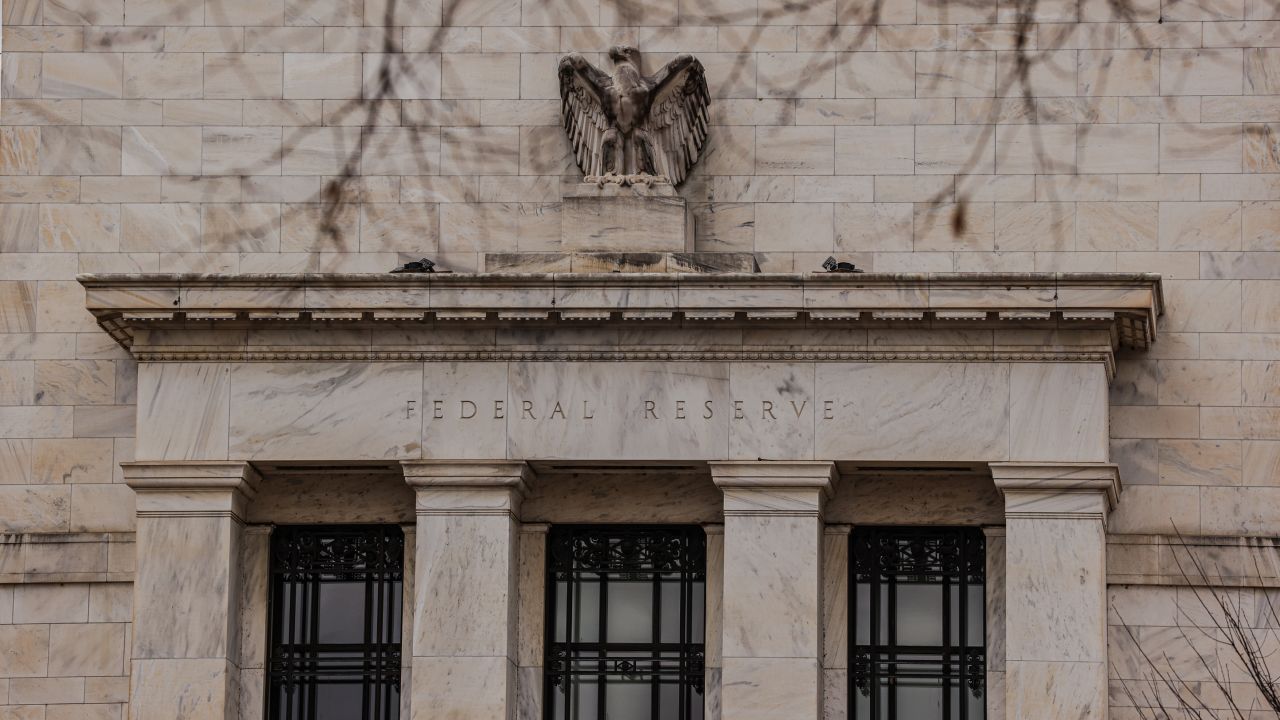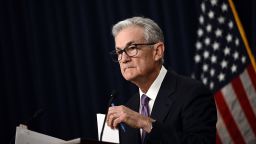The Federal Reserve held interest rates steady Wednesday for the fourth-straight meeting, keeping its benchmark lending rate at a 23-year high, as Wall Street eagerly awaits rate cuts sometime this year.
The central bank has raised rates 11 times since March 2022 in a bid to combat the fastest inflation in decades. Price hikes have eased substantially since then, inching closer to the Fed’s 2% target. That means the Fed is due to cut rates in 2024, which officials themselves projected last month, but the central bank’s latest policy statement released Wednesday pushed back on expectations of the first rate cut coming in March.
“The Committee does not expect it will be appropriate to reduce the target range for the federal funds rate until it has gained greater confidence that inflation is moving sustainably toward 2 percent,” the statement read.
Fed Chair Jerome Powell emphasized that sentiment in his post-meeting news conference, saying that “there was no proposal to cut rates,” and that cutting in March is “probably not the most likely case.” Officials need to see “greater confidence” that inflation is on a sustainable path toward 2% before considering rate cuts, he said.
Additionally, he noted: “We have not achieved a soft landing yet,” referring to a scenario in which the economy defeats inflation without triggering a recession. “Certainly, I’m encouraged — and we’re encouraged — by the progress, but we’re not declaring victory at all at this point.”
Stocks sank on Powell’s comment that March cuts were off the table. The Dow closed 318 points, or 0.8% lower. The S&P 500 dropped 1.6% and the Nasdaq Composite fell by 2.2%.
Here are some key takeaways from the central bank’s latest decision.
More clues on when rate cutting should start
No rate cut in March is something Fed officials have been communicating for weeks now, and Wall Street has been slow to come to grips with that guidance.
In early January, futures showed that rate cuts were very likely going to happen in March, but those odds have since crumbled. They rose slightly following the Fed’s decision, and the Fed hasn’t completely ruled out the possibility of a March cut since the Fed’s March 19-20 meeting is several weeks — and many economic reports — away.
Generally, a rapidly weakening economy threatening job losses is an obvious reason why the Fed would begin to cut rates, but the economy remains in good shape with unemployment low and economic growth in positive territory. Inflation also hasn’t reached the Fed’s 2% target just yet and the latest policy statement kept a usual phrase stating that it “remains elevated.”
That’s the big question the Fed is currently contending with: When is the right time to begin cutting interest rates? There are consequences if the Fed cuts rates too soon and if it cuts too late.
The Fed chief detailed what conditions need to be in place for the Fed to feel confident enough that it is time to start cutting rates. Mainly, it’s more data showing inflation is easing.
“That six months of good inflation data, is it sending us a true signal that we are, in fact, on the sustainable path down to 2% inflation?” he said. “The answer will come from some more data that is also good data.”
Powell has previously said rates should be cut before inflation reaches 2% because it is widely understood that monetary policy has a lagged effect on the broader, real economy.
The effect of rising inflation-adjusted interest rates
Officials are also considering the effects of rising “real” interest rates, which comes about when inflation eases off but interest rates remain elevated, unnecessarily squeezing the economy and risking job losses.
In theory, the so-called neutral rate of interest is a hypothetically ideal — or “Goldilocks” — level of interest rates that is neither weighing too much on the economy nor employment.
Powell said “we don’t know with great confidence where the neutral rate of interest is at any given time,” but that it “also doesn’t mean that we wait around to see the economy turn down, because that will be too late.”
Put together, this all means the Fed is doing a difficult balancing act of weighing the risk that inflation’s slowdown could stall, or even reignite, against the risk that the previous 11 rate hikes could inadvertently weigh too much on the economy, pushing up unemployment.
Those risks are have been “moving into better balance,” according to Wednesday’s statement.
So far so good, but watch the labor market
“We seem to be heading towards a soft landing scenario,” Subadra Rajappa, head of US rates strategy at Société Générale, told CNN. “But the market has priced in 150 basis points of cuts, which has led to this significant easing of financial conditions and that could potentially delay the timing of any sort of monetary policy normalization.”
In response to a question posed by CNN, Powell said Fed officials are noticing that the economy is “picking up at the margin,” based on comments from business leaders and other stakeholders.
Fed officials have said they likely need to see “below-trend growth” to be assured that inflation is on its way to 2%. Economists and officials have attributed inflation’s slowdown in recent years to supply-side developments, such as improving supply chains.
That means the final mile of the Fed’s historic inflation would have to be helped along by waning demand, which is still going strong.
The US economy expanded at a seasonally and inflation-adjusted 3.3% annualized rate in the fourth quarter, capping a year of healthy economic growth. Similarly, the job market is still humming along with the unemployment rate at a low 3.7%. Slower growth and hiring would likely help with bringing inflation down further.
On the flip side, the Fed could actually cut rates sooner than expected if “we saw an unexpected weakening, certainly in the labor market,” Powell said.
In a separate statement, the Fed also reaffirmed its commitment to its dual mandate of stabilizing prices and maximizing employment.









